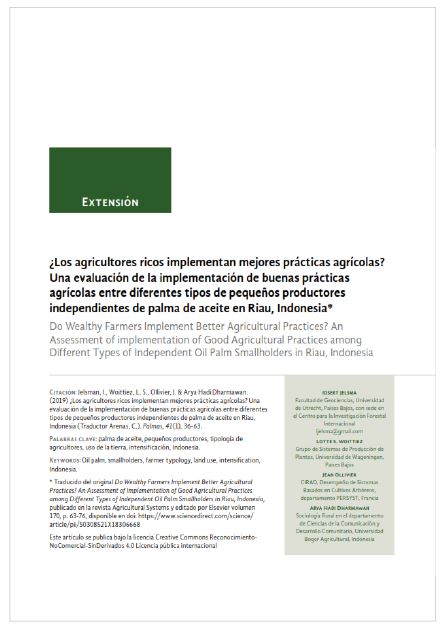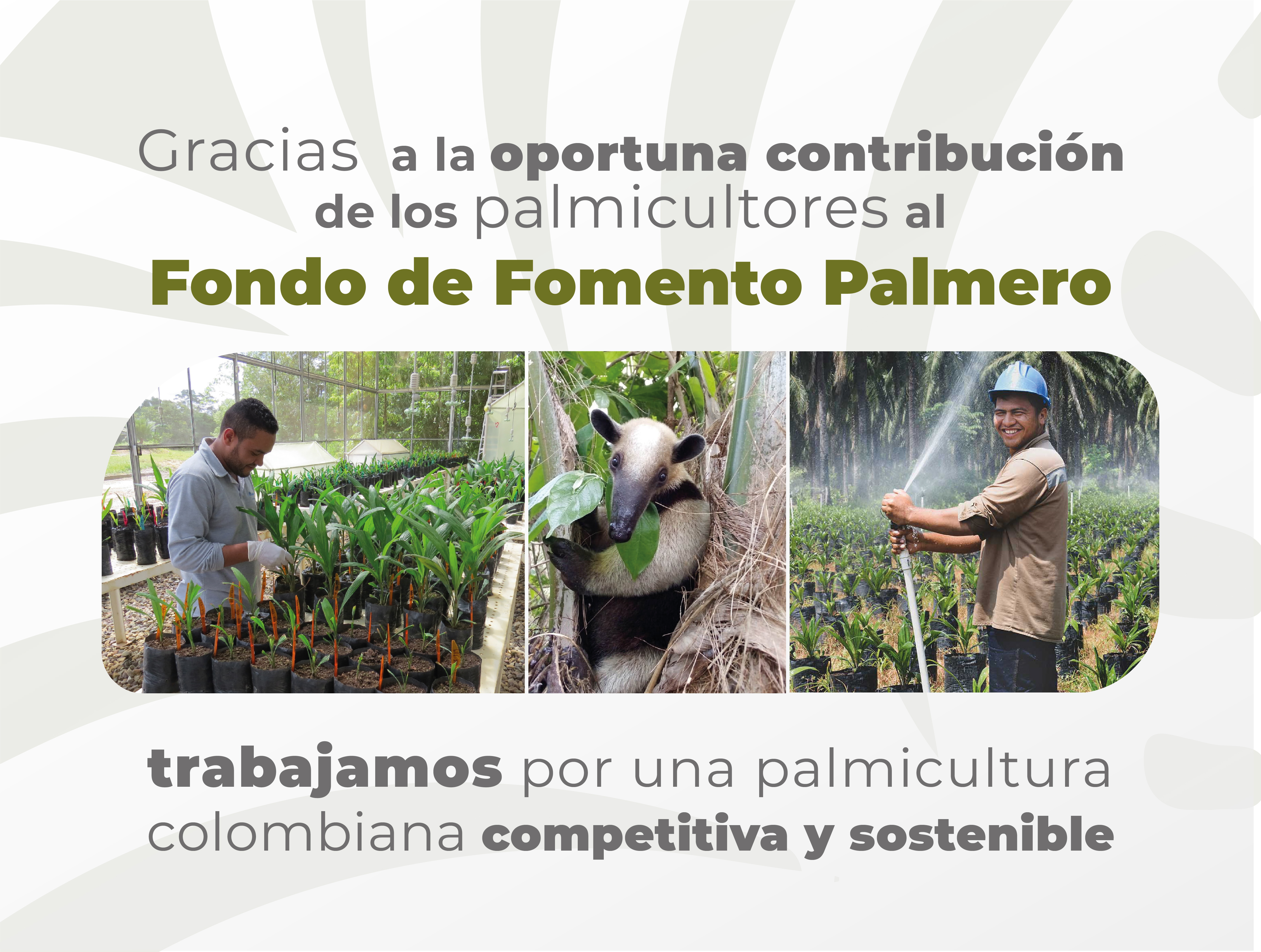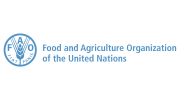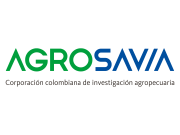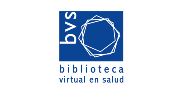¿Los agricultores ricos implementan mejores prácticas agrícolas? Una evaluación de la implementación de buenas prácticas agrícolas entre diferentes tipos de pequeños productores independientes de palma de aceite en Riau, Indonesia
Palabras clave:
palma de aceite, pequeños productores, tipología de agricultores, uso de la tierra, intensificación, IndonesiaResumen
Durante los últimos 30 años el aceite de palma se convirtió en el principal aceite vegetal, y los pequeños productores en Indonesia, el principal productor de aceite de palma (Elaeis guineensis) del mundo con más de 12 millones de hectáreas, adoptaron este cultivo de forma masiva. En Sumatra, donde se cultiva más del 60 % del aceite de palma de Indonesia, los pequeños productores cubren aproximadamente el 50 % del área actual sembrada con este cultivo. Sin embargo, su rápida expansión no ha estado libre de controversias. En los esfuerzos actuales del gobierno de Indonesia, la empresa privada y varias ONG para mejorar el desempeño del sector, los pequeños productores suelen ser caracterizados como el talón de Aquiles debido a sus pobres prácticas y bajos rendimientos, en comparación con las compañías. No obstante, “pequeños productores de palma de aceite” es un concepto global y solo existe una limitada investigación respecto a su diversidad, más allá de la división de agricultores independientes frente a organizados. Esta investigación ahonda en la implementación de buenas prácticas agrícolas (BPA) en siete tipos de pequeños productores independientes en el distrito (Kabupaten) de Rokan Hulu, en la provincia de Riau. La investigación fue realizada en un área agrícola establecida relacionada con suelos minerales y en una frontera relativa, principalmente a turba. Los tipos de productores variaron de pequeños locales a grandes agricultores que, usualmente, residían en áreas urbanas apartadas de sus plan- taciones y que consideraban el cultivo de la palma de aceite como una oportunidad de inversión. La hipótesis subyacente es que los grandes agricultores tienen más capital y, por lo tanto, implementan mejores prácticas agrícolas que los pequeños, quienes suelen tener más limitaciones de dinero. Se aplicaron varios métodos, incluyendo encuestas a agricultores y sobre las fincas, teledetección, análisis de tejidos e interpretación de fotografías por expertos. Estos métodos proporcionaron datos sobre el uso de fertilizante, las condiciones de nutrientes de las palmas de aceite, material y patrones de siembra y otras prácticas de manejo en las plantaciones. Los resultados mostraron que los rendimientos eran pobres, la implementación de BPA era limitada y que había mucho por mejorar entre todos los tipos de agricultores. Los materiales de siembra deficientes, patrones de siembra cuadrados y la aplicación limitada de nutrientes fueron particularmente comunes. Esto implicó que las varias tipologías de agricultores eligieran un sistema de baja demanda de insumos y baja productividad por varias razones, y que bajo las condiciones actuales, sea poco probable que iniciativas como optimizar el acceso a fondos o a la disponibilidad de buenos materiales de siembra, mejoren significativamente, por sí solas, la productividad y sostenibilidad del sector de los pequeños productores de palma de aceite.
Referencias bibliográficas
Afrizal, 2013. Oil palm plantations, customary rights, and local protests: a West Sumatra Case Study. En: Anton Lucas, C. W. (Ed.), Land for the People: the State and Agrarian Conflict in Indonesia. Ohio University Press, pp. 149-182.
Alcott, B., 2005. Jevons’ paradox. Ecol. Econ. 54, 9-21.
Bissonnette, J.-F., De Koninck, R., 2017. The return of the plantation? Historical and contemporary trends in the relation between plantations and smallholdings in Southeast Asia. J. Peasent Stud. 44 (4), 918-938.
Bonneau, X., Ochs, R., Quasairi, L., Lubis, L. N., 1993. Hybrid coconut mineral nutrition on peat, from the nursery to the start of production. Oleagineux 48, 9-26.
BPDPKS, 2017. Smallholder plantation replanting program: challenges and Opportunities. En: 13th Indonesian Palm Oil Conference and 2018 Price Outlook; Growth through Productivity and Partnership with Smallholders, Session 2 Palm Oil for Indonesian Welfare. IOPA, Bali Nusa Dua Convention Centre, Nusa Dua, Bali (1-3 November).
Brandi, C., Cabani, T., Hosang, C., Schirmbeck, S., Westermann, L., Wiese, H., 2015. Sustainability standards for palm oil: challenges for smallholder certification under the
RSPO. The Journal of Environment & Development 24 (3), 292-314.
Busch, J., Ferretti-Gallon, K., Engelmann, J., Wright, M., Austin, K. G., Stolle, F., Turubanova, S., Potapov, P. V., Margono, B., Hansen, M. C., Baccini, A., 2015. Reductions in emissions from deforestation from Indonesia’s moratorium on new oil palm, timber, and logging concessions. Proc. Natl. Acad. Sci. 112 (5), 1328-1333.
Byerlee, D., Deininger, K., 2013. The rise of large farms in land-abundant countries: do they have a future? En: Holden, S. T., Otsuka, K., Deininger, K. (Eds.), Land Tenure Reform in Asia and Africa: Assessing Impacts on Poverty and Natural Resource Management. Palgrave Macmillan Reino Unido, Londres, pp. 333-353.
Byerlee, D., Stevenson, J., Villoria, N., 2014. Does intensification slow cropland expansion or encourage deforestation? Global Food Security 3 (2), 92-98.
CIFOR, 2014. Pre-fire deforestation in Riau from 1990 to 2013. http://gislab.cifor.cgiar. org/geoportal/catalog/search/resource/details.page?uuid=%7b7CCA4303-DC884A68-878FBC38B28F3BE8%7d (accessed on 16-05-2016).
Colchester, M., Jiwan, N., Andiko Sirait, M., Firdaus, A. Y., Surambo, A., Pane, H., 2006. Palm Oil and Land Acquisition in Indonesia: Implications for Local Communities and Indigenous Peoples. Moreton-in-Marsh and Bogor: Forest Peoples Programme. Perkumpulan Sawit Watch, HuMa, World Agroforestry Centre.
Comte, I., Colin, F., Grünberger, O., Follain, S., Whalen, J. K., Caliman, J. -P., 2013. Landscape- scale assessment of soil response to long-term organic and mineral fertilizer application in an industrial oil palm plantation, Indonesia. Agric. Ecosyst. Environ. 169, 58-68.
Corley, R. H. V., 2009. How much palm oil do we need? Environ. Sci. Policy 12 (2), 134-139. https://doi.org/10.1016/j.envsci.2008.10.011.
Cramb, R. A., 2013. Palmed off: incentive problems with joint-venture schemes for oil palm development on customary land. World Dev. 43, 84-99.
Cramb, R., McCarthy, J. F., 2016. The Oil Palm Complex: Smallholders, Agribusiness and the State in Indonesia and Malaysia. NUS Press, Singapur.
DIS-BUN Propinsi Riau, 2015. Lampiran Surat Kepala Dinas Perkebunan Provinsi Riau; 503/ Disbun-Pengemb/tangal 01 September 2015 (Excel file only). Dinas Perkebunan Propinsi Riau, Pekanbaru.
DJP, 2015. Statistik Perkebunan Indonesia Komoditas Kelapa Sawit 2014-2016 Directorate General of Estate Crops, Yakarta, pp. 69.
DJP, 2017a. Pedoman peremajaan tanaman kelapa sawit pekebun, pengembangan sumber daya manusia dan bantuan sarana dan prasarana dalam kerangka pendanaan badan pengelola dana perkebunan kelapa sawit. En: 29/KPTS/KB.120/3/2017. Direktorat Jenderal Perkebunan, Yakarta.
DJP, 2017b. Statistik Perkebunan Indonesia; Kelapa Sawit 2015-2017. Direktorat Jenderal Perkebunan, Yakarta.
Euler, M., Krishna, V., Schwarze, S., Siregar, H., Qaim, M., 2017. Oil palm adoption, household welfare, and nutrition among smallholder farmers in Indonesia. World Dev. 93, 219-235.
Fairhurst, T.H., Griffiths, W., 2014. Oil palm: best management practices for yield in tensification. International Plant Nutrition Institute (IPNI), Singapur.
Fairhurst, T., Härdter, R., 2003. The Oil Palm. Management for Large and Sustainable Yields. Singapore: Potash & Phosphate Institute of Canada, Potash & Phosphate Institute. International Potash Institute.
Fairhurst, T. H., Mutert, E., 1999. Interpretation and management of Oil Palm Leaf Analysis Data. Better Crops International 13 (1), 48-51.
Feintrenie, L., Chong, W., Levang, P., 2010. Why do farmers prefer oil palm? Lessons learnt from Bungo district, Indonesia. Small-Scale Forestry 9 (3), 379-396.
Forest People Program, 2013. Constitutional Court Ruling Restores Indigenous Peoples’ Rights to their Customary Forests in Indonesia. https://www.forestpeoples.org/en/topics/rights- land-natural-resources/news/2013/05/constitutional-court-rulingrestores-indigenous-pe(accessed on 05-05-2018).
Foster, H. L., Prabowo, N. E., 2006. Partition and transfer of nutrients in the reserve tissue and leaves of oil palm. En: Workshop on Nutrient Needs in Oil Palm. IPNI, Singapur, pp. 18 (17-18 de octubre).
Gaveau, D. L. A., Salim, M. A., Hergoualc’h, K., Locatelli, B., Sloan, S., Wooster, M., Marlier, M. E., Molidena, E., Yaen, H., Defries, R., Verchot, L., Murdiyarso, D., Nasi, R., Holmgren, P., Sheil, D., 2014. Major atmospheric emissions from peat fires in Southeast Asia during non-drought years: evidence from the 2013 Sumatran fires. Sci. Rep. 4, 6112.
Gaveau, D. L. A., Pirard, R., Salim, M. A., Tonoto, P., Parks Husnayaen S. A., Carmenta, R., 2017. Overlapping land claims limit the use of satellites to monitor No-Deforestation commitments and No-Burning compliance. Conserv. Lett. 10 (2), 257-264.
Van Gelder, J. W., Sari, A., Pacheco, P., 2017. Managing Palm Oil Risks: a brief for financiers.
RSPO (November). Gellert, P., 2015. Palm oil expansion in Indonesia: Land grabbing as accumulation by dispossession. World Dev. 33 (8), 1345-1364.
Gillespie, P., 2010. Politics, power and participation: a political economy of oil palm in the Sanggau district of West Kalimantan. Australian National University, Canberra (PhD. tesis).
Gillespie, P., 2011. How does legislation affect oil palm smallholders in the Sanggau District of Kalimantan, Indonesia? Australas. J. Nat. Resour. Law Pol. 14 (1), 1-37.
Goh, K. J., 2005. Fertilizer recommendation systems for oil palm: estimating the fertilizer rates. En: Malaysian Oil Scientists’ and Technologists’ Association (MOSTA) Best Practices Workshops 2004: Agronomy and Crop Management, March to August 2004, pp. 235-268 Kuala Lumpur.
Goh, K. J., Härdter, R., Fairhurst, T. H., 2003. Fertilizing for maximum return. En: Härdter, R., Fairhurst, T. H. (Eds.), Oil Palm: Management for Large and Sustainable Yields. PPI/PPIC and IPI, Singapore, pp. 279-306.
Hayami, Y., 2010. Chapter 64 Plantations Agriculture. En: Prabhu, P., Robert, E. (Eds.), Handbook of Agricultural Economics. vol. 4. Elsevier, pp. 3305-3322.
Hazell, P., Poulton, C., Wiggins, S., Dorward, A., 2010. The future of small farms: trajectories and policy priorities. World Dev. 38 (10), 1349-1361.
Hidayat, N. K., 2017. At the bottom of the value chain: Sustainability certification and the livelihoods of palm oil smallholders in Indonesia. Maastricht University, Maastricht (PhD. tesis).
Hidayat, K. N., Glasbergen, P., Offermans, A., 2015. Sustainability certification and palm oil smallholders’ livelihood: a comparison between scheme smallholders and in dependent smallholders in Indonesia. Int. Food Agribus. Man. 18 (3).
Ivancic, H., Koh, L. P., 2016. Evolution of sustainable palm oil policy in Southeast Asia. Cogent Environmental Science 2 (1).
Jelsma, I., Schoneveld, G. C., Zoomers, A., van Westen, A. C. M., 2017a. Unpacking Indonesia’s independent oil palm smallholders: an actor-disaggregated approach to identifying environmental and social performance challenges. Land Use Policy 69, 281-297.
Jelsma, I., Slingerland, M., Giller, K. E., Bijman, J., 2017b. Collective action in a smallholder oil palm production system in Indonesia: the key to sustainable and inclusive smallholder palm oil? J. Rural. Stud. 54, 198-210.
KPK, 2016. Kajian Sistem Pengelolaan Komoditas Kelapa Sawit. Direktorat Penelitian dan pengembangan kedeputian bidang pencegahan komisi pemberantasan korupsi Republik Indonesia, Yakarta, pp. 53.
Lee, J., Ghazoul, J., Obidzinski, K., Koh, L., 2013. Oil palm smallholder yields and in comes constrained by harvesting practices and type of smallholder management in Indonesia. Agron. Sustain. Dev. 34, 1-13.
Liwang, T., 2017. Support of research to increase palm oil productivity with special reference to improved planting materials. En: 13th Indonesian Palm Oil Conference and 2018 Price Outlook; Growth through productivity and Partnership with Smallholders, Session 3. Increasing productivity through intensification and efficiency. IOPA, Bali Nusa Dua Convention Centre, Nusa Dua (1-3 November).
Mathews, J., Foong, L. C., 2010. Yield and harvesting potentials. Planter 86, 699-709. McCarthy, J. F., Zen, Z., 2016. Agribusiness, agrarian change, and the fate of oil palm
smallholders in Jambi. En: McCarthy, J. F., Cramb, R. (Eds.), The Oil Palm Complex: Smallholders and the State in Indonesia and Malaysia. National University of Singapore, Singapore, pp. 109-154.
MoA, 2011. Peta sebaran lahan gambut di Sumatera. En: Balau besar penelitian dan pengembangan sumberdaya lahan pertanian Badan Penelitian dan Pengembangen Pertanian Kementerian Pertanian RI, (Yakarta).
MoF, 2014. SK.878/MenHut-II/2014 Tentang Kawasan Hutan Provinsi Riau. (Yakarta). Molenaar, J. W., Persch-Orth, M., Lord, S., Taylor, C., Harms, J., 2013. Diagnostic Study on Indonesian Palm Oil Smallholders: Developing a better understanding of their performane and potential. International Finance Corporation, Yakarta.
Ng, S. K., Uexküll, H. R. v., Thong, K. C., Ooi, S. H., 1990. Maximum exploitation of genetic yield potentials of some major tropical tree crops in Malaysia. En: Symposium on Maximum Yield Research, (17 August, Kyoto).
Ng, P. H. C., Chew, P. S., Goh, K. J., Kee, K. K., 1999. Nutrient requirements and sustain ability in mature oil palms - an assessment. The Planter 75, 331-345.
Obidzinski, K., Andriani, R., Komarudin, H., Andrianto, A., 2012. Environmental and social impacts of oil palm plantations and their implications for biofuel production in Indonesia. Ecol. Soc. 17 (1), 25.
Prabowo, D., Maryudi, A., Senawi, Imron, M. A., 2017. Conversion of forests into oil palm plantations in West Kalimantan, Indonesia: Insights from actors’ power and its dy namics. Forest Policy Econ. 78, 32-39.
Purnomo, H., Shantiko, B., Sitorus, S., Gunawan, H., Achdiawan, R., Kartodihardjo, H., Dewayani, A. A., 2017. Fire economy and actor network of forest and land fires in Indonesia. Forest Policy Econ. 78, 21-31.
Rankine, I., Fairhurst, T., 1998. Oil Palm Field Handbook; Mature. Potash & Phosphate Institute, Singapore.
Rival, A., Montet, D., Pioch, D., 2016. Certification, labelling and traceability of palm oil: can we build confidence from trustworthy standards? OCL 23 (6), D609.
Rokan Hulu, B. P. S., 2015. Kabupaten Rokan Hulu dalam angka 2015. Badan Pusat Statistik Kabupaten Rokan Hulu.
RSPO, 2017. RSPO Smallholder Strategy; Objectives, Outputs and Implementation. Kuala Lumpur.
Sayer, J., Ghazoul, J., Nelson, P., Klintuni Boedhihartono, A., 2012. Oil palm expansion transforms tropical landscapes and livelihoods. Glob. Food Sec. 1 (2), 114-119.
Soliman, T., Lim, F. K. S., Lee, J. S. H., Carrasco, L. R., 2016. Closing oil palm yield gaps among Indonesian smallholders through industry schemes, pruning, weeding and improved seeds. Royal Soc. Open Sci. 3 (8).
SPKS, 2018. Undangan Diskusi National Definisi dan Karakterstik Petani Swadaya Kelapa Sawit. SPKS, Hotel Sari Pan Pacific, Yakarta (8 February).
Susanti, A., Maryudi, A., 2016. Development narratives, notions of forest crisis, and boom of oil palm plantations in Indonesia. Forest Policy Econ. 73, 130-139.
Tester, M., Langridge, P., 2010. Breeding technologies to increase crop production in a changing world. Science 327 (5967), 818-822.
Uexküll, H.v., Henson, I. E., Fairhurst, T., 2003. Canopy management to optimize yield. En: Härdter, R., Fairhurst, T. H. (Eds.), Oil Palm Management for Large and Sustainable Yields. Potash & Phosphate Institute of Canada, Potash & Phosphate Institute, International Potash Institute, Singapore, pp. 163-180.
USDA, 2016. Oilseeds: World Markets and Trade. Foreign Agricultural Service, Washington D. C.
Villoria, N. B., Golub, A., Byerlee, D., Stevenson, J., 2013. Will yield improvements on the forest frontier reduce greenhouse gas emissions? A global analysis of oil palm. Am. J. Agric. Econ. 95 (5), 1301-1308.
Woittiez, L. S., Haryono, S., Turhina, S., Dani, H., Dukan, T. P., Smit, H., 2015. Smallholder Oil Palm Handbook (beta version). Wageningen & The Hague: Wageningen University and SNV International Development Organisation.
Woittiez, L. S., Slingerland, M., Rafik, R., Giller, K. E., 2018. Nutritional imbalance in smallholder oil palm plantations in Indonesia. Nutr. Cycl. Agroecosyst. 111 (1), 73-86.
Zen, Z., McCarthy, J. F., Chalil, D., Sitorus, H., Shahputra, M., 2015. High Carbon Stocks (HCS) and the socio-economics of palm oil: Towards improving the sustainability of the oil palm sector in Indonesia.
Zen, Z., Barlow, C., Gondowarsito, R., McCarthy, J. F., 2016. Interventions to promote smallholder oil palm and socio-economic improvement in Indonesia. En: Cramb, R., McCarthy, J. F. (Eds.), The Oil Palm Complex: Smallholders, agribusiness and the State in Indonesia and Malaysia. National University of Singapore, Singapur, pp. 78-108.


